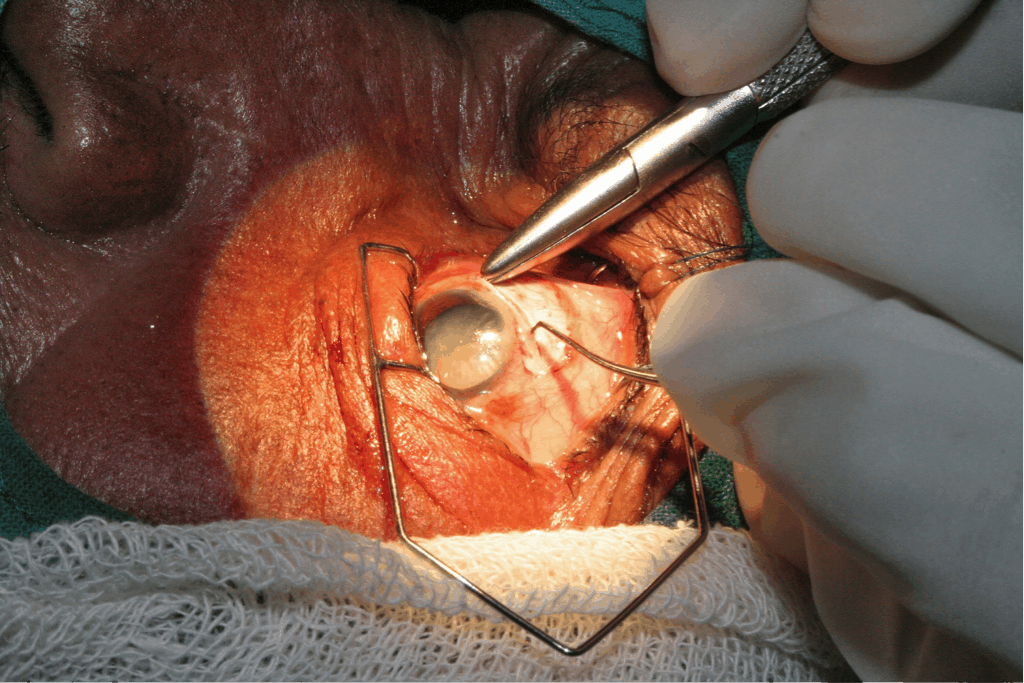Cataract Surgery – An Overview
Cataract is an age related condition in which people suffer from vision loss due to the clouding of eye lens. In this condition, the transparency of the eye lens will be lost gradually to become translucent and then makes the lens opaque. Cataract causes complete blindness to patients. The symptoms of this condition are double vision, blurred vision, light sensitivity, reduced night vision, more light required while reading, and changed power of eye glasses. Cataract cannot be fixed with the help of spectacles, contact lenses and refractive surgeries like LASIK. Even though cataract is the result of aging, some people are suffering from cataract by birth or due to eye injury caused by physical trauma, drug, or chemicals.

Image courtesy: Lance Bellershttps://creativecommons.org/licenses/by-nc/2.0/
Surgical Procedure
The cloudy lens of the eye is removed during a cataract surgery and the natural lens is replaced with an intraocular lens. The implanted lens will remain inside the eyes permanently. The surgery is performed by an eye surgeon by giving local anesthesia to the patient. General anesthesia is required in rare cases. With the use of advanced techniques and equipment, it ensures fast recovery. The patient can leave the hospital on the same day of the operation.
Types of Cataract Surgery
Different types of cataract surgeries to treat cataract are phacoemulsification, manual small incision cataract surgery, extracapsular cataract extraction, and intracapsular cataract extraction.
Phacoemulsification: This is the most commonly used surgical technique in which an ultrasonic tool with a steel or titanium tip is used to remove the opaque lens. The tip of the surgical tool vibrates to emulsify the lens material. Another surgical tool known as cracker or chopper is used to chop the nucleus. The fragmentation of nucleus helps to perform the emulsification easily and it also helps in the removal of cortical material. After phacoemulsification, a probe is used to remove remaining cortical material.
Extracapsular Cataract Extraction (ECCE): This technique is used to remove the natural lens completely, but keeps the posterior capsule to implant intraocular lens. It involves the manual extraction of the natural lens by making an incision in the cornea or sclera.
Intracapsular Cataract Extraction (ICCE): This method is used to remove natural lens as well as the surrounding posterior capsule together. This procedure poses high risks as a large incision is made during the procedure and also because of the pressure exerted on the vitreous humor. Hence, it is performed in countries with advanced equipment, but very rarely.
Manual Small Incision Cataract Surgery (MSICS): MSICS is a technique evolved from the ECCE procedure. In this procedure, natural lens is removed through an incision made in scleral tunnel. The incision made by this procedure will be small and watertight. Hence, sutures are not required for the surgical wound. The outcome of phacoemulsification and MSICS is same, but lower costs and short operating time makes MSICS preferable than phacoemulsification.
Implantation of Intraocular Lenses
After the removal of cataract, the surgeon will replace the natural lens with artificial lens or intraocular lens. IOL is made of silicone, acrylic or plastic with suitable power selected by the surgeon to obtain normal vision for the patient. The IOL implantation is permanent and the patient does not have to give any special care for the implanted lens. Even after the implantation of the lens, the patients may require an eyeglass prescription.
Cataract Surgery Recovery Time
At least for the first week after the cataract surgery, the patient should not involve in strenuous activities such as heavy lifting, sports activities, swimming, etc. Exercising and bending should be avoided during the recovery period. While bathing and showering, patients should keep their eyes closed. Refrain from any activity that exposes the eyes to grime, infection and dust.